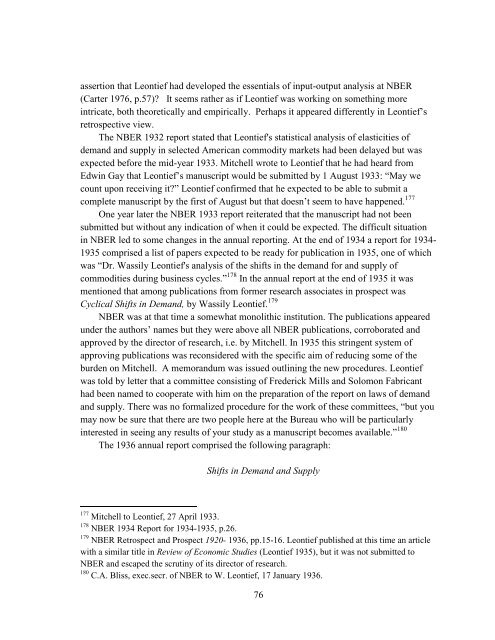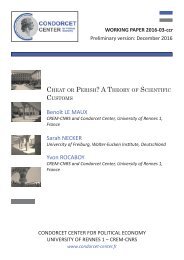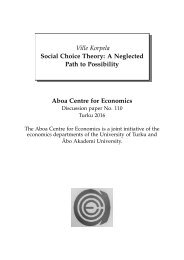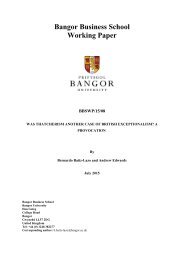MEMORANDUM
n?u=RePEc:hhs:osloec:2016_018&r=hpe
n?u=RePEc:hhs:osloec:2016_018&r=hpe
You also want an ePaper? Increase the reach of your titles
YUMPU automatically turns print PDFs into web optimized ePapers that Google loves.
assertion that Leontief had developed the essentials of input-output analysis at NBER<br />
(Carter 1976, p.57)? It seems rather as if Leontief was working on something more<br />
intricate, both theoretically and empirically. Perhaps it appeared differently in Leontief’s<br />
retrospective view.<br />
The NBER 1932 report stated that Leontief's statistical analysis of elasticities of<br />
demand and supply in selected American commodity markets had been delayed but was<br />
expected before the mid-year 1933. Mitchell wrote to Leontief that he had heard from<br />
Edwin Gay that Leontief’s manuscript would be submitted by 1 August 1933: “May we<br />
count upon receiving it?” Leontief confirmed that he expected to be able to submit a<br />
complete manuscript by the first of August but that doesn’t seem to have happened. 177<br />
One year later the NBER 1933 report reiterated that the manuscript had not been<br />
submitted but without any indication of when it could be expected. The difficult situation<br />
in NBER led to some changes in the annual reporting. At the end of 1934 a report for 1934-<br />
1935 comprised a list of papers expected to be ready for publication in 1935, one of which<br />
was “Dr. Wassily Leontief's analysis of the shifts in the demand for and supply of<br />
commodities during business cycles.” 178 In the annual report at the end of 1935 it was<br />
mentioned that among publications from former research associates in prospect was<br />
Cyclical Shifts in Demand, by Wassily Leontief. 179<br />
NBER was at that time a somewhat monolithic institution. The publications appeared<br />
under the authors’ names but they were above all NBER publications, corroborated and<br />
approved by the director of research, i.e. by Mitchell. In 1935 this stringent system of<br />
approving publications was reconsidered with the specific aim of reducing some of the<br />
burden on Mitchell. A memorandum was issued outlining the new procedures. Leontief<br />
was told by letter that a committee consisting of Frederick Mills and Solomon Fabricant<br />
had been named to cooperate with him on the preparation of the report on laws of demand<br />
and supply. There was no formalized procedure for the work of these committees, “but you<br />
may now be sure that there are two people here at the Bureau who will be particularly<br />
interested in seeing any results of your study as a manuscript becomes available.” 180<br />
The 1936 annual report comprised the following paragraph:<br />
Shifts in Demand and Supply<br />
177 Mitchell to Leontief, 27 April 1933.<br />
178 NBER 1934 Report for 1934-1935, p.26.<br />
179 NBER Retrospect and Prospect 1920- 1936, pp.15-16. Leontief published at this time an article<br />
with a similar title in Review of Economic Studies (Leontief 1935), but it was not submitted to<br />
NBER and escaped the scrutiny of its director of research.<br />
180 C.A. Bliss, exec.secr. of NBER to W. Leontief, 17 January 1936.<br />
76





